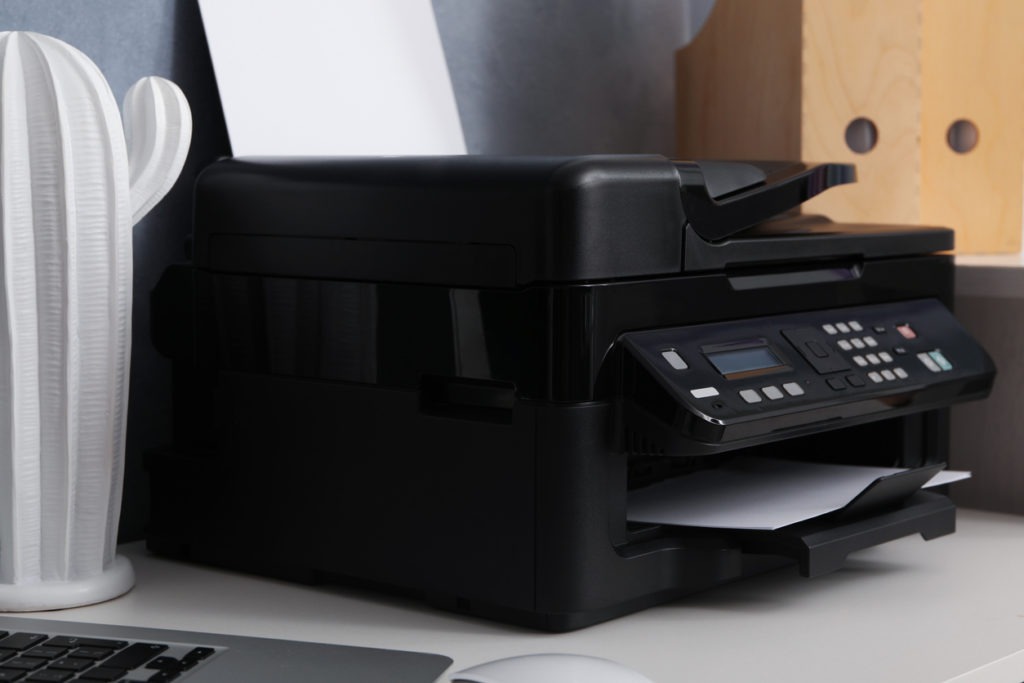Scanners for documents are commonplace in households and companies. Digital scanning of high quality alleviates the stress of filing paper forms and facilitates document sharing. You may extract the text from scanned documents using specialized software, making them easier to search. As a result of scanning, photographers may digitally restore and fix ancient images.
What is a document scanner?
Document scanners are electronic devices that digitize paper documents. These scanners are widely employed in commercial settings to digitize crucial documents. They are beneficial for both small and large businesses. There are numerous varieties of document scanners, allowing them to be useful for a variety of industries.
As businesses and people migrate their information to digital formats for safekeeping, document scanners play a crucial role. However, you must conduct study to identify which scanner is appropriate for your business.
Different Types of Document Scanners
Portable Document Scanners
Portable document scanners are typically smaller and less expensive than desktop document scanners. As their name implies, portable scanners are transportable. During an impromptu business meeting, you can swiftly remove the scanner from your bag and save the documents you’re reading digitally. A portable scanner is more efficient than shooting a few images of the documents using your smartphone.
Different types of portable scanners include handheld, wireless, and foldable models. It is important to note that the scan quality can vary depending on the scanner used. Costlier wireless versions may produce photos with a better resolution than handheld scanners.
As with other business decisions, the ideal buy will depend on your organization’s requirements. If you scan hundreds or thousands of documents per week, a small handheld scanner is likely not the most efficient option. The selection will be based on your requirements and a cost-benefit analysis.
Desktop Document Scanners
Desktop scanners are larger and stationary in contrast to portable scanners. You will not want to transport a bulky desktop printer across town in order to scan documents during a conference. While this may not be appropriate for many businesses, huge desktop document scanners provide numerous benefits.
Desktop scanner characteristics include rapid printing and automation; some desktop scanners can also rectify errors automatically.
For instance, if a document is placed one way and the following page is placed upside down, the machine may detect the problem and still spit out the right output by rotating the page or images. This can save huge companies a great deal of trouble.
In addition to scanning speed and the ability to scan both sides of double-sided photographs, purchasing a desktop document scanner has other advantages. Despite the fact that these scanners tend to be more expensive, many advanced ones are excellent for larger enterprises.
Flatbed Scanner
In a flatbed scanner, the document is placed face down on the glass plate with the cover raised. Once the cover is closed and the machine is turned on, the document is scanned from beginning to end. The document scanner subsequently transmits the results to a computer. If no computer is accessible, several of these equipment may keep the duplicated information in their memories.
Typically, a flatbed scanner is built for photos and text. However, it is feasible to scan an object using the device. This can be accomplished by placing the object on the glass plate. However, just the portion of the image that touches the glass plate is likely to be duplicated. In certain instances, a flatbed scanner may feature a sheet feeder, which automatically feeds documents through the scanner without the need to manually position each page.
The sheet-fed scanner lacks a lid and glass plate. In most instances, the user feeds the document to be duplicated into the machine’s slot or sheet feeder. Typically, the document moves through the machine automatically. A scan head copies the data on the document as it moves, and the original document is ejected.
In some instances, a scanner is part of a bigger device. There are, for instance, multifunction devices that feature a scanner in addition to a fax machine, photocopier, and printer. Before a scanner can be used with a computer, it is typically essential to install specific software on the computer. Once this is accomplished, the machine can frequently be operated through computer.
Most scanners connect to a computer by a wire that plugs into an available port, typically a USB port. It may be possible to network a document scanner so that it can communicate with numerous computers without being physically connected to each. Typically, the document scanner will also have a power cord. This power cord is frequently detachable, allowing it to be swapped if the device must be used in countries with different electrical systems.
Advantages of the Document Scanner
1. More Office Space
Using prime office space to store business records is an expensive endeavor. Scanning your papers releases office space that can be used to produce more cash for your business. Instead of occupying space in cumbersome filing cabinets, thousands of files can be kept on a single server.
2. Improved Information Archiving
If you own significant historical documents, you should preserve them for future generations. Unfortunately, every time they are handled, their aging accelerates. Scanning documents is the “last touch” solution. First, this allows you to safeguard vital data from physical deterioration. The second advantage is that it improves the legibility of ancient hardcopy records.
3. Improve Data Security
Protecting hard copy material is, at best, challenging. The cloud can encrypt, password-protect, and securely store scanned documents. Then, you may assign certain users access permissions and monitor all file activity.
4. Enhancement of Staff Collaboration
Scanning papers facilitates document sharing and collaboration without the need to reproduce information on paper. This allows personnel in many places to simultaneously access and see electronic documents.
5. Audit Conformity
Compliance is a reality for the majority of companies. First, document scanning facilitates your organization’s compliance with legal and regulatory requirements. And secondly, digital files can be efficiently organized, indexed, and produced to satisfy even the most stringent auditor’s requirements.
6. Cost-Effectiveness
While digitization is an investment in and of itself, document scanning reduces overhead costs in multiple ways. For example, the cost of printing, photocopying, or purchasing paper is significantly reduced. Additionally, the cost of physical space and maintenance is eliminated. Moreover, a substantial amount of time is saved when searching for and accessing files, which reduces the amount of time spent on daily tasks. With a more efficient procedure for collecting and archiving papers, you are able to devote more time to more crucial business matters.
7. Increased Efficiency
Communication, cooperation, and automation, which are all crucial in the big scheme of things, are impacted by digitalization in general. Digital scanning has a direct influence on productivity in that it reduces the amount of time employees spend locating, processing, and transmitting information. Indirectly, the act of reclaiming workplace space is empowering. What will you do if you remove all of these file cabinets? Perhaps you can lower office rent, or perhaps you can use the reclaimed space to build a collaborative and team-oriented work atmosphere. A clutter-free working environment may do wonders for the productivity of your workers.
8. Increased Security
There are numerous ways in which physical papers might be compromised. Physical documents are prone to unforeseen disasters (such as fire or water), human error (such as misplacing or losing documents), and natural aging (such as paper decaying or ink going out). Scanning paper documents enables numerous backups on your PC, mobile devices, and in the cloud. This ensures that your data will be maintained for years and years to come.
9. Facilitate Document Distribution
Preparing documents for dissemination is a tedious, time-consuming, and costly procedure that needs multiple processes. If a document is modified, it becomes more difficult to provide updated copies to everyone. This complicates paper distribution.
Document scanning and imaging nevertheless streamlines and simplifies the procedure considerably. This provides you the choice of distributing the papers on a CD, emailing them, or putting them on a shared drive. With this option at your disposal, delivering papers over an intranet or to different offices is now far simpler than in the past.
10. Don’t Lose Files
With disorganization and stuffed filing cabinets comes the risk of document loss, as various individuals handle them daily. This can lead to unnecessary searches for documents that have been misfiled or lost. With an electronic file system, numerous users can access a document without it being damaged or lost. Consequently, a document imaging system is perfect.
In conclusion
Whether you manage a business or a personal office, you are likely searching for ways to become more efficient and economical. You can easily achieve this purpose by digitizing your paper records. As file sizes continue to grow, duplicates multiply, and document management becomes overwhelming Scanning essential documents and storing them on a hard drive or server can facilitate the organization of your paperwork.



